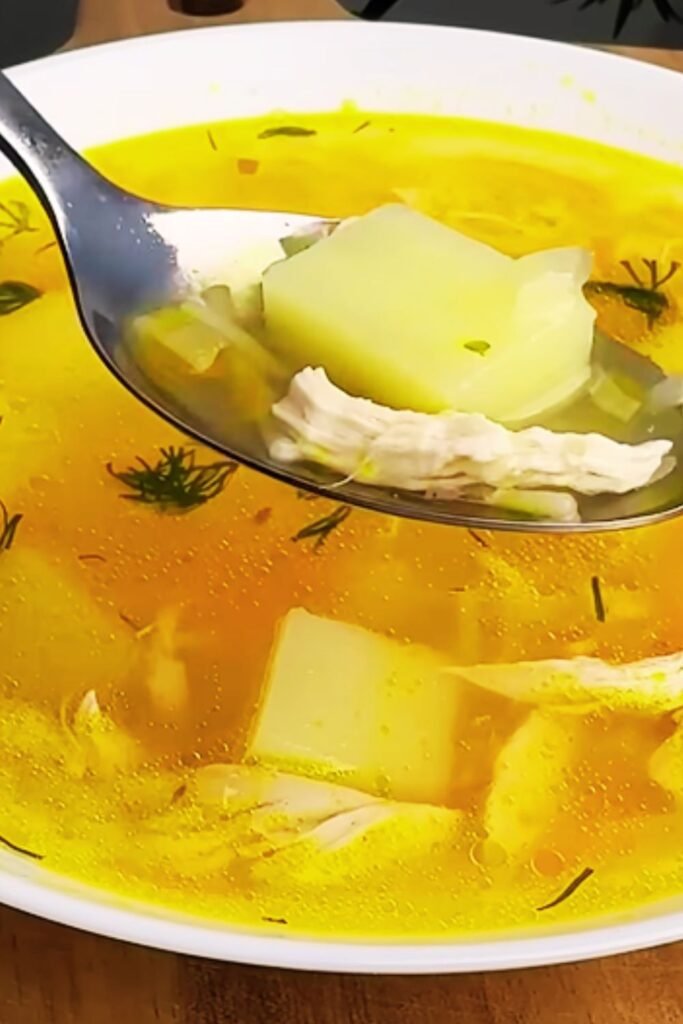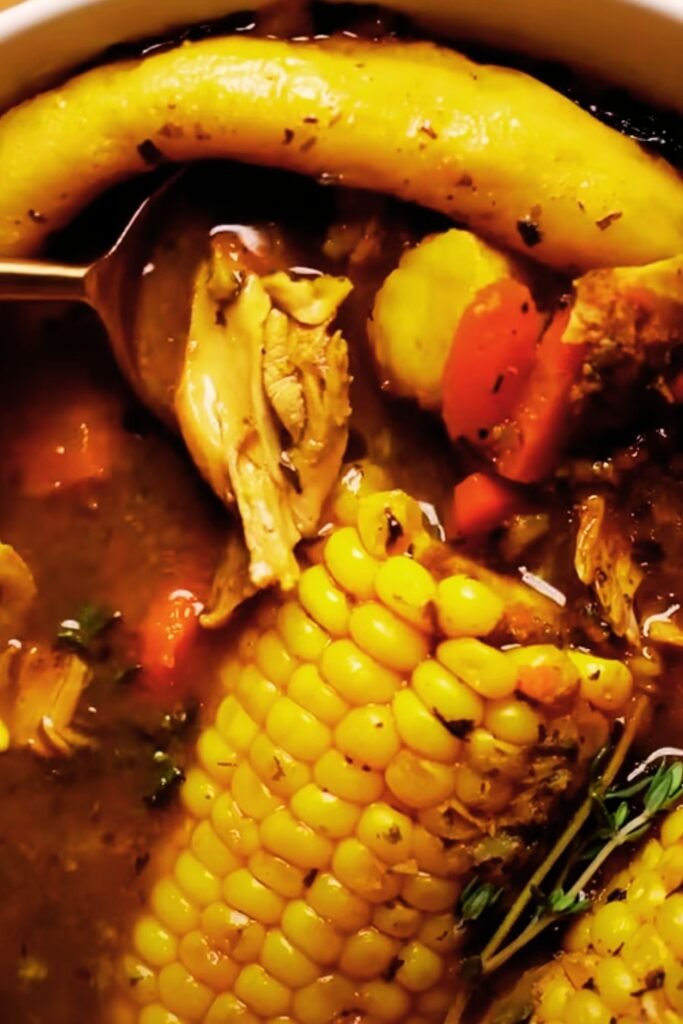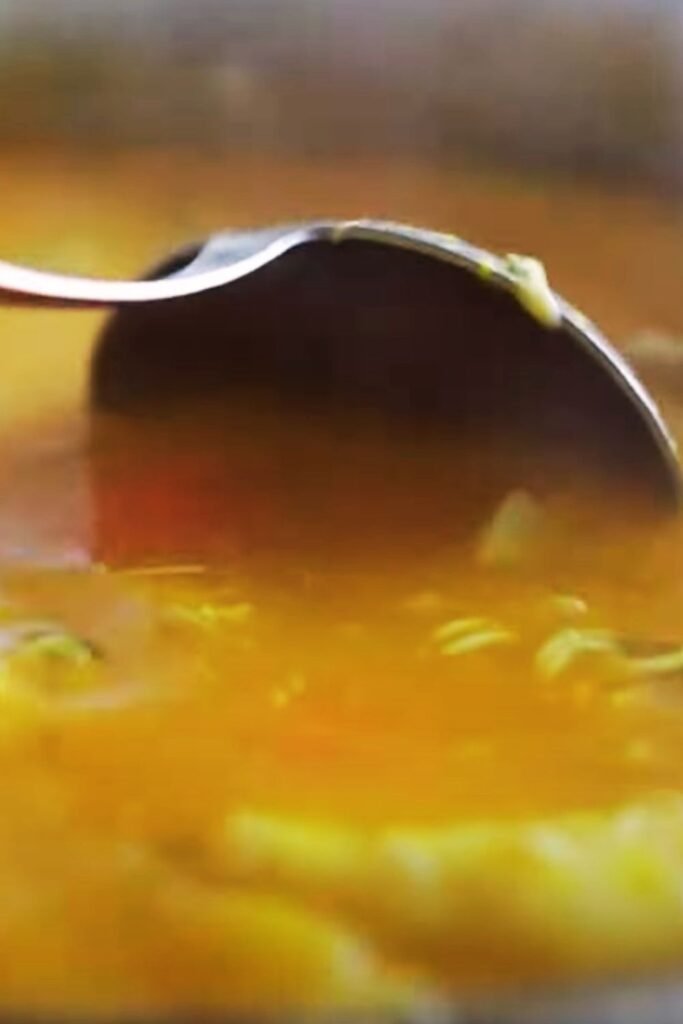When I first encountered authentic Jamaican chicken soup during my culinary adventures in Kingston, I was completely unprepared for the explosion of flavors that would dance across my palate. This wasn’t just any ordinary chicken soup – it was a vibrant, aromatic masterpiece that seemed to capture the very essence of Caribbean warmth and hospitality in a single bowl.
Jamaican chicken soup stands as one of the island’s most beloved comfort foods, transcending social boundaries and bringing families together around dinner tables across the nation. Unlike its more subdued cousins found in other cuisines, this soup bursts with bold flavors, featuring an intricate blend of traditional Caribbean spices, hearty vegetables, and tender chicken that creates a symphony of taste and nutrition.
What makes this soup truly special isn’t just its incredible taste – it’s the nourishing properties that have made it a go-to remedy for everything from common colds to broken hearts. The combination of fresh herbs, robust spices, and wholesome ingredients creates a dish that feeds both body and soul, embodying the Jamaican philosophy of food as medicine.
Understanding the Foundation: Key Ingredients and Their Significance
Scotch Bonnet Peppers: These fiery little gems serve as the heart of Jamaican cuisine, providing not just heat but a distinctive fruity flavor that’s impossible to replicate with other peppers.
Allspice (Pimento): Known locally as pimento, this aromatic spice gives Jamaican dishes their characteristic warmth and depth.
Thyme: Fresh thyme adds an earthy, aromatic quality that complements the other Caribbean flavors beautifully.
Yam and Dasheen: These starchy root vegetables provide substance and create the soup’s satisfying, hearty texture.
Dumplings: Traditional Jamaican dumplings, made from flour and water, add a comforting element that transforms the soup into a complete meal.
The beauty of Jamaican chicken soup lies in its flexibility and the way each ingredient contributes to both flavor and nutritional value. I’ve discovered that the secret to achieving that authentic taste lies in understanding how these components work together harmoniously.
Nutritional Powerhouse: Health Benefits That Matter
| Nutrient Category | Primary Sources in Soup | Health Benefits |
|---|---|---|
| Protein | Chicken, flour (dumplings) | Muscle building, tissue repair, immune support |
| Complex Carbohydrates | Yam, dasheen, dumplings | Sustained energy, fiber for digestion |
| Vitamins A & C | Scotch bonnet peppers, carrots | Immune system boost, antioxidant properties |
| B Vitamins | Chicken, root vegetables | Energy metabolism, nervous system health |
| Iron | Chicken, leafy greens | Oxygen transport, preventing anemia |
| Potassium | Root vegetables, chicken broth | Heart health, blood pressure regulation |
The nutritional profile of this soup makes it particularly valuable for growing children, recovering individuals, and anyone seeking a wholesome, satisfying meal. I’ve found that a single bowl provides approximately 25-30 grams of high-quality protein, making it an excellent choice for maintaining muscle mass and supporting overall health.
Mastering the Art: Step-by-Step Preparation Guide
Essential Ingredients Checklist
• 2-3 pounds whole chicken, cut into pieces • 2 large yams, peeled and cubed • 1 medium dasheen, peeled and cubed • 2 carrots, sliced • 1 large onion, chopped • 3-4 cloves garlic, minced • 1 scotch bonnet pepper (whole) • 2 sprigs fresh thyme • 1 teaspoon allspice berries • Salt and black pepper to taste • 2 cups flour for dumplings • 8-10 cups water

Preparation Method
My approach to creating this soup has evolved over years of experimentation, and I’ve learned that patience and proper technique make all the difference.
Step 1: Seasoning the Chicken I begin by thoroughly washing the chicken pieces with lime juice and salt – a traditional Caribbean technique that removes any unwanted flavors and prepares the meat for optimal seasoning absorption. After patting dry, I season generously with salt, pepper, and minced garlic, allowing the flavors to penetrate for at least 30 minutes.
Step 2: Building the Flavor Base In a large, heavy-bottomed pot, I heat a tablespoon of oil over medium-high heat. The chicken pieces go in skin-side down, developing a beautiful golden-brown color that will contribute significantly to the soup’s final flavor profile. This browning process typically takes 6-8 minutes per side.
Step 3: Creating the Aromatic Foundation Once the chicken achieves that perfect golden hue, I add the chopped onions, allowing them to soften and become translucent. The remaining garlic follows, filling the kitchen with an irresistible aroma that signals the beginning of something truly special.
Step 4: Adding Liquid and Seasonings Water goes in gradually, accompanied by the whole scotch bonnet pepper (keeping it intact prevents overwhelming heat while still infusing the soup with its distinctive flavor), fresh thyme sprigs, and allspice berries. I bring this mixture to a rolling boil before reducing heat to maintain a gentle simmer.

Step 5: Incorporating Root Vegetables After the chicken has simmered for approximately 30 minutes and begins to tender, I add the cubed yam and dasheen. These vegetables require adequate cooking time to achieve the proper texture – soft enough to contribute to the soup’s body while maintaining enough structure to provide satisfying bites.
Step 6: Dumpling Preparation and Addition While the vegetables cook, I prepare traditional Jamaican dumplings by combining flour with just enough water to create a firm dough. Small portions get rolled into oval shapes before being added to the bubbling soup. These dumplings will cook in about 15-20 minutes, expanding and becoming beautifully tender.
Step 7: Final Seasoning and Adjustments During the last 10 minutes of cooking, I add the sliced carrots and make final seasoning adjustments. The scotch bonnet pepper can be removed at this point if the heat level seems appropriate, though many Jamaican families prefer to leave it in for continued flavor development.
Regional Variations and Personal Adaptations
| Region/Style | Key Differences | Special Additions |
|---|---|---|
| Kingston Style | Heavier on scotch bonnet, includes callaloo | Saltfish, coconut milk |
| Rural Parishes | More root vegetables, larger dumplings | Breadfruit, green banana |
| Diaspora Version | Milder heat, accessible ingredients | Bell peppers, regular potatoes |
| Health-Conscious | Reduced sodium, more vegetables | Quinoa, additional leafy greens |
Throughout my culinary journey, I’ve encountered fascinating regional variations that reflect local preferences and ingredient availability. In some rural areas, cooks add breadfruit or green banana for extra heartiness, while urban versions might incorporate more readily available vegetables.
The diaspora communities have created their own adaptations, often substituting ingredients while maintaining the soup’s essential character. I’ve seen successful versions using regular potatoes instead of yam, or jalapeños in place of scotch bonnet peppers, proving that the soup’s soul transcends specific ingredients.

Serving Suggestions and Accompaniments
Jamaican chicken soup traditionally stands alone as a complete meal, but certain accompaniments can enhance the dining experience significantly. I prefer serving it with warm, crusty bread or traditional Jamaican hard dough bread, which provides an excellent vehicle for soaking up the flavorful broth.
• Fresh Lime Wedges: A squeeze of lime brightens the flavors and adds a citrusy note that complements the rich, savory base • Avocado Slices: Creamy avocado provides a cooling contrast to the soup’s warmth and spice • Rice and Peas: This classic Jamaican side dish creates a more substantial meal • Festival: These sweet fried dumplings offer a delightful textural contrast • Plantain Chips: Crispy plantains add crunch and subtle sweetness
Storage and Reheating Guidelines
| Storage Method | Duration | Best Practices |
|---|---|---|
| Refrigerator | 3-4 days | Store in airtight containers, separate broth from solids if possible |
| Freezer | 2-3 months | Freeze in portion-sized containers, omit dumplings for best texture |
| Reheating | Various | Add fresh liquid if needed, reheat gently to prevent overcooking |
One aspect I’ve learned through experience is that this soup actually improves with time. The flavors continue developing as it sits, making day-two soup often superior to the original. However, the dumplings can become slightly mushy during storage, so I sometimes prepare fresh dumplings when reheating leftover soup.
Troubleshooting Common Challenges
Problem: Soup too spicy My solution involves adding more liquid and root vegetables to dilute the heat. Dairy products aren’t traditional in Jamaican cuisine, but a small amount of coconut milk can help tame excessive spiciness while maintaining authenticity.
Problem: Dumplings falling apart This usually indicates the dough was too wet or the cooking temperature too high. I’ve found that maintaining a gentle simmer and ensuring proper dough consistency prevents this issue.
Problem: Vegetables mushy Timing is crucial. I add harder vegetables like yam and dasheen early, while softer ones like carrots go in during the final stages to maintain their texture and nutritional value.
Problem: Lack of flavor depth Proper browning of the chicken and allowing adequate simmering time are essential. I also recommend using whole spices rather than ground ones when possible, as they provide more complex flavors.
Cultural Significance and Family Traditions
This soup represents more than just sustenance in Jamaican culture – it embodies the concept of “nyam and belly full,” which emphasizes satisfaction and contentment through good food. Many families have their own secret ingredient or technique passed down through generations, creating unique variations that reflect individual family histories.
I’ve observed that the preparation of this soup often becomes a communal activity, with multiple family members contributing to the chopping, seasoning, and cooking processes. These shared experiences strengthen family bonds while preserving culinary traditions for future generations.
Questions and Answers
Q: Can I make this soup without scotch bonnet peppers? A: Absolutely! While scotch bonnet peppers provide authentic flavor, you can substitute with jalapeños or even a small amount of hot sauce. The key is finding the right heat level for your preference while maintaining the soup’s essential character.
Q: What’s the best way to reduce cooking time? A: I recommend using a pressure cooker, which can reduce total cooking time to about 45 minutes. Cut vegetables slightly smaller and add them according to their cooking requirements – harder vegetables first, softer ones later.
Q: Can I make this soup vegetarian? A: Yes, though it becomes a different dish entirely. Use vegetable broth instead of water, add extra vegetables like okra and callaloo, and consider including beans for protein. The result won’t be traditional Jamaican chicken soup, but it will be delicious and nutritious.
Q: How do I know when the chicken is properly cooked? A: The chicken should easily fall off the bone and register at least 165°F (74°C) internal temperature. I typically simmer for 45-60 minutes, depending on the size of the pieces.
Q: Can I prepare this soup in advance? A: This soup is excellent for meal prep. I often make large batches on weekends and portion them for the week. The flavors actually improve overnight, making it perfect for advance preparation.
Q: What should I do if my soup is too thin? A: I mash some of the cooked root vegetables against the pot’s side to naturally thicken the broth. Alternatively, you can mix a small amount of flour with cold water to create a slurry and stir it in during the final cooking minutes.
Q: Is it necessary to use whole chicken pieces? A: While whole pieces provide better flavor, you can use boneless chicken if preferred. However, bone-in pieces contribute significantly to the broth’s richness and body, so I recommend them when possible.
This nourishing Jamaican chicken soup represents everything I love about Caribbean cuisine – bold flavors, wholesome ingredients, and the ability to bring people together around a shared meal. Whether you’re seeking comfort during cold weather, fighting off a illness, or simply wanting to experience authentic Caribbean flavors, this soup delivers on all fronts. The combination of tender chicken, hearty vegetables, and aromatic spices creates a dish that satisfies both hunger and soul, embodying the warmth and hospitality that Jamaica is famous for worldwide.